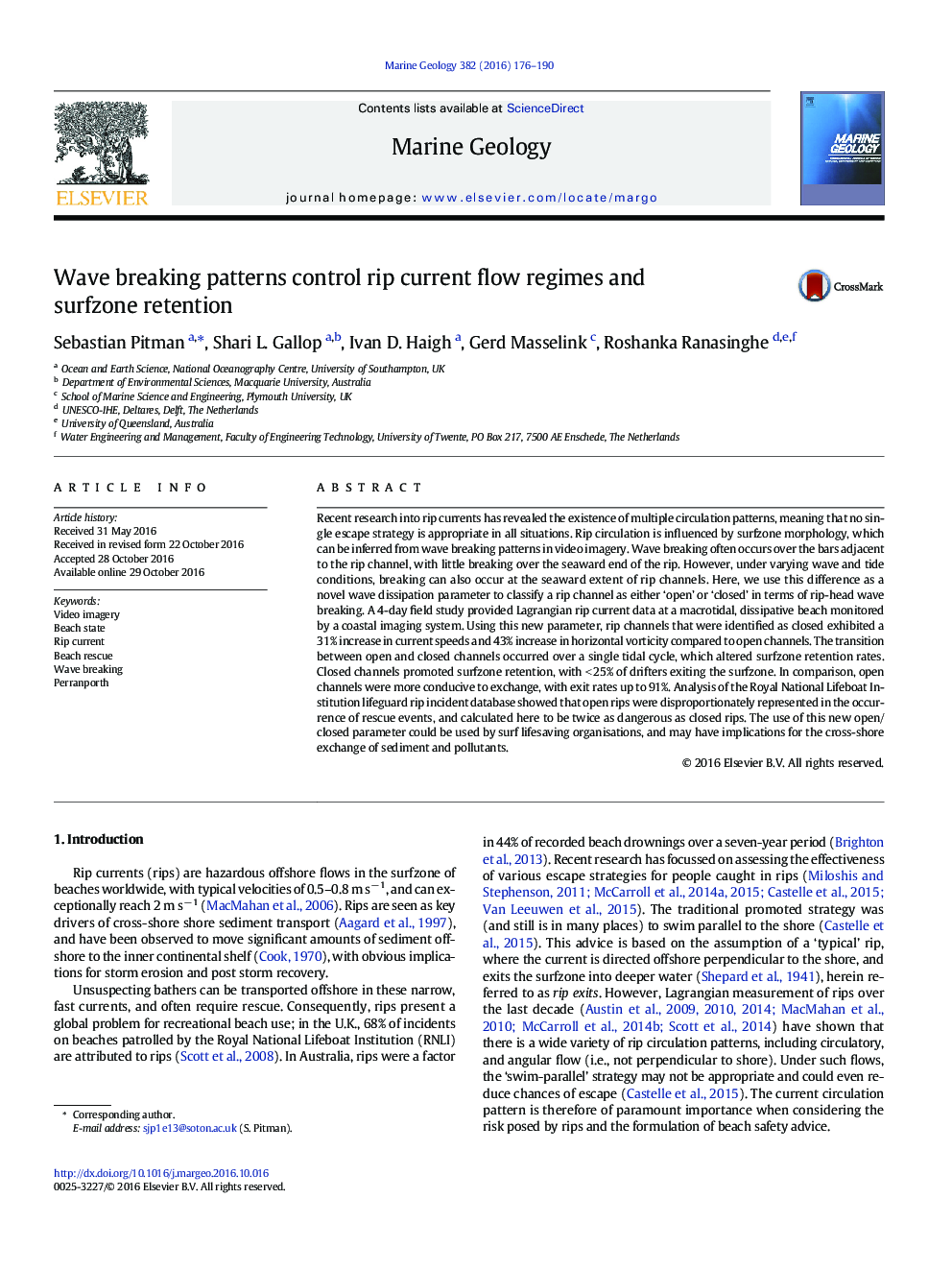| Article ID | Journal | Published Year | Pages | File Type |
|---|---|---|---|---|
| 8912106 | Marine Geology | 2016 | 15 Pages |
Abstract
Recent research into rip currents has revealed the existence of multiple circulation patterns, meaning that no single escape strategy is appropriate in all situations. Rip circulation is influenced by surfzone morphology, which can be inferred from wave breaking patterns in video imagery. Wave breaking often occurs over the bars adjacent to the rip channel, with little breaking over the seaward end of the rip. However, under varying wave and tide conditions, breaking can also occur at the seaward extent of rip channels. Here, we use this difference as a novel wave dissipation parameter to classify a rip channel as either 'open' or 'closed' in terms of rip-head wave breaking. A 4-day field study provided Lagrangian rip current data at a macrotidal, dissipative beach monitored by a coastal imaging system. Using this new parameter, rip channels that were identified as closed exhibited a 31% increase in current speeds and 43% increase in horizontal vorticity compared to open channels. The transition between open and closed channels occurred over a single tidal cycle, which altered surfzone retention rates. Closed channels promoted surfzone retention, with <Â 25% of drifters exiting the surfzone. In comparison, open channels were more conducive to exchange, with exit rates up to 91%. Analysis of the Royal National Lifeboat Institution lifeguard rip incident database showed that open rips were disproportionately represented in the occurrence of rescue events, and calculated here to be twice as dangerous as closed rips. The use of this new open/closed parameter could be used by surf lifesaving organisations, and may have implications for the cross-shore exchange of sediment and pollutants.
Related Topics
Physical Sciences and Engineering
Earth and Planetary Sciences
Geochemistry and Petrology
Authors
Sebastian Pitman, Shari L. Gallop, Ivan D. Haigh, Gerd Masselink, Roshanka Ranasinghe,
